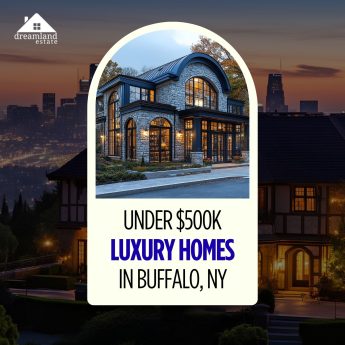How to Blend Natural Elements into Your Outdoor Living Design

When it comes to outdoor living design, the best spaces feel like a natural extension of your environment. They are not just built, but grow from the landscape itself.
No matter if you live in the rolling suburbs of North Texas or in a rural part of the state, you can blend natural elements into the outdoor space that looks amazing while giving you a feeling of being close to nature.
Outdoor Living Design: Things You Should Consider

If you have a big outdoor space and plan to transform it into a beautiful outdoor living design, you will have to use it strategically. If you plan properly, you will be able to use the space all year long.
Start with the Surroundings
Before you even begin choosing materials or drawing out plans, take a close look at your surroundings. What kind of soil, light, and terrain do you have to work with?
Are there native trees, views, or slopes that should be worked into your layout? Instead of fighting nature, use it as a blueprint.
Oak, cedar, and mesquite trees are common in Texas. Including shade patterns from these trees or using wood patterns that have the texture of these trees can help you create an amazing design.
Use the layout of your property to shape the flow of paths, patios, or sitting areas rather than bulldozing through it.
Use Natural Materials
The easiest way to make an outdoor space feel organic is to use natural materials. This does not mean you need to spend a lot on expensive limestones and barnwood. However, you can use pressure-treated wood or poured concrete.
Native Texas limestone, decomposed granite, and river rock are durable and blend effortlessly with almost the whole of the Texas landscape.
Wood types like cedar and redwood provide a rich look and hold up well in properly treated Texas weather. Even gravel pathways can feel high-end when framed by natural borders and planted with drought-tolerant edging.
Plant with Purpose
A good outdoor living design does not add plants at the end. It plans from the beginning. Think of native plants that thrive in local conditions and do not need a lot of water or maintenance.
Think about layering your plant choices. Ground covers like horseherb or silver ponyfoot can soften hard edges. Shrubs and ornamental grasses add volume and movement.
Trees and vertical plants create privacy or frame views. Group your plantings in odd numbers (usually threes or fives) and mimic how nature scatters plants: irregular but intentional.
Build Around Natural Light
Light changes everything in outdoor design. Where does the sun hit in the morning versus the afternoon? Which spots are already naturally shaded?
Do not place the seating area in the hottest and most exposed part of your yard. Look for spots that have shade or where you would be able to add a pergola.
Use natural elements like climbing vines or tall grasses for privacy. This would add shade while keeping the look soft and natural. Use string lights with warm bulbs to use the place to the fullest in the evening as well, without disturbing the ambiance.
Add Water Thoughtfully
Water features can make your backyard space look amazing. However, you must choose everything carefully. Bright, blue prefabricated pools, or oversized fountains, do not always look good. Instead, you can choose subtle and cohesive ways to do that.
A trickling stream-style feature, a small stone mountain, or a still pond surrounded by some regional plants can create an amazing effect without overpowering the landscape.
Ensure the water feature has good drainage and circulation to ensure no stagnation and does not attract mosquitoes.
Let Imperfection Be Part of the Plan
The best way to blend natural elements smoothly is to embrace a little imperfection. Nature is not polished or symmetrical; it is rugged. So, you have to ensure the design does not feel like a setup.
The pathways should look gentle, and there should be various textures bumping into one another. There is a Japanese philosophy known as Wabi-Sabi that embraces the beauty of transience and imperfection.
If you are looking for outdoor living design, this is a mindset that you should embrace. There is no harm if the stones are irregular or a tree leans to the other side.
Think Functionally, Not Just Aesthetically
A beautifully natural space still needs to work well. That means designing around how people use the space. If you entertain, focus on flow between zones: cooking, dining, and lounging.
If your goal is quiet mornings or reading outside, you may prioritize cozy nooks and soft surfaces.
Natural elements can serve multiple purposes. A boulder can become a bench, and a low stone wall can double as a planter and a place to sit.
A tree stump can hold drinks or lanterns. The more functions you can work into the natural layout, the more seamless and intentional your space will feel.
Let the Seasons Influence Your Design
One of the major benefits of designing with natural elements is that it changes through the seasons. Plan the landscape in a way that the different elements shine at some point of the year.
You could choose flowering plants with bloom cycles or add some deciduous trees, which will keep the place cool, provide shade during the summers, and let the light come in during the wintertime.
Native grasses, evergreens, and textured barks can make things look lively during winter. Moreover, you can add summer blooms like salvia and lantana to add some color during the summer. Let things evolve, and do not keep things the same every month.
Embrace Sustainability
The best outdoor living designs do not just look normal, but they respect nature. This means that you have to take care of erosion, water use, local wildlife, and long-term maintenance.
Use mulch and native ground to retain moisture. Pick plants that attract local pollinators. Avoid using harsh chemicals that can harm the water system and soil.
Adding compost bins, paving stones, or rain barrels are small changes that can make a huge environmental difference. These features not just help the planets, but also gives the feeling that the yard is a part of the landscape, and not just something on top of it.
Blending natural elements into outdoor living design is about more than aesthetics. It is all about working in alignment with nature. Just use the things that you have to and not something that it does not need but want anyway.
Create a space that feels like it truly belongs. With a little bit of planning, a good eye for materials, and respect for the land, you can create an outdoor space that feels like home in all seasons.










Leave A Reply